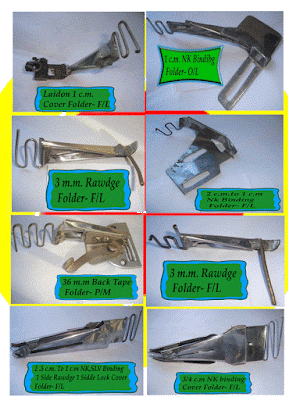Work Study is a systematic examination of the method of carrying activities, so as
to input the effective use of resources and to set up standards and performance
of the activities being carried out.
Therefore,
A
collection of techniques used to examine work-what is done and how it is done,
so that there is a systematic analysis of all the elements, factors, resources
and relationships affecting the efficiency and effectiveness of the work being
studied.
Work
study uses techniques like method study and work measurement to understand
human work potential in terms of time spend on completing task, looking at ways to make the task
simpler and easy as to increase productivity and efficiency.
Work
study is a field used to finding ways of increasing on job performance, optimum
usage of plant, and machinery, standardization of work, etc.
According to the Genre of Works, Work Study Engineer’s
JD (Job Description) are divided with 2 functions.
1.
Engineering Function
2.
General Function.
Engineering Functions
Method Study: Space Environment, Equipment, Machine Attatchment,
Element Study, Effective and Ineffective time segregation, Handling and
Movement, Contingency, Improve, Worker Performance, Find Better Way of Work,
Reduce ineffective time and increasing needling time, selling better method to
others.
Work Measurement: Cycle Check, Observed Time, Rating, BMV, SMV,
Production Study, Time Study, Setting time standard and sampling.
General Sewing Data (GSD): Method Study and Develop within GSD Coding time by
reducing unnecessary task through method study.
Breakdown and Layout: Operation Breakdown, Time setting, Process
sequence, Tight & Loose flow, Incentive or No Incentive layout, Operation
& Workers Selection.
Consumption: All measurable trims like Thread, String, Tape,
Webbing, Binding, Grosgrain, Velcro, Elastic, Z-Band/linear, Fabric & other
like.
Calculation: Feeding Time, Produced Time, Efficiency, Target
Setting, Productivity Gap, Individual Performance and Capacity, Potential
Pieces, Required Production Days/hours/workers, Contingency, AQL, OQL, Accuracy
& Confident Level, Cost Breakdown point, Ratio, Load Range, Sewing Time, Effective
Time, BTP, HPT, LPT, BMV, SMV.
General Function:
SMV & Production Plan: SMV estimation and update production plant.
Incentive Package: Analysis and Control Production Plan as higher
performance level.
Reporting: Efficiency, Performance, Capacity, Production Statement,
Earning Statement, Comparison, Factory/Line Capacity, Incentive Calculation and
Management Key Information as required.
Keeping History: Standard Data, Product, Earning, Efficiency,
Performance, Progression, Target & Target Efficiency Analysis.
Data Centralization: Control and Centralization of all data across
units.
Save Materials: Protection to misuse of trims measurable like’s
threads. String, Binding, Tape, Velcro, Elastic, Z-band, Webbing, Grosgrain etc.
and countable likes Button Eyelet, Stopper, Puller, Zipper etc.
Multi Experience: Basic quality procedure and acceptance level,
Basic maintenance, Cutting, Marker, Pattern, Sample & Packing/Shipping
Method.
Reserved Expert: To help others section where needed as reserved
expert.
Motivation: Training, Job Facilities, Life Standardization and
Techniques Presentation.
Among these Work Study Engineering Department has involved few some
steps.
1. Analyze each
style to determine its requirement for production.
2. Style
Analysis is based on:
(i)
Factory’s Quality Standards.
(ii)
Amount of Labor Required
(iii)
Available Equipment.
(iv)
Volume to be Produced
(v)
Expected “throughput time”.
3. Style
requirements are determined through analysis of samples and specifications.
4. Apparel
Engineers are Concerned with:
(i)
Number, complexity and sequence of operations.
(ii)
Equipment Required.
(iii)
Time & Skill Required.
5. Operation
Breakdown: Work in each style is broken
down into operations. An operation Breakdown is a sequential list of all the
operations that involved in assembling a garment used to establish the workflow
for each style.
6. Apparel
Engineers Study each operation to improve its effectiveness and efficiency and to
establish methods to ensure a consistent performance by operators and
consistent products.
Edited By:
Md. Farid Ahmed
Fakir Apparels Ltd.
BSCIC Industrial Area, Enayet Nagar,
Fatulla, Narayangonj, Bangladesh.
Mobile: 8801814220987
E-mail: farid.ieconcern@gmail.com


No comments:
Post a Comment